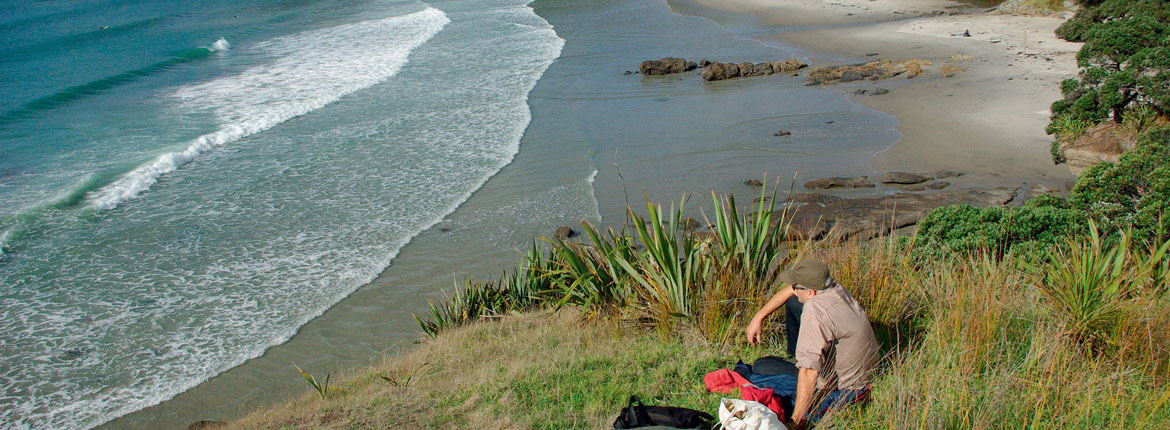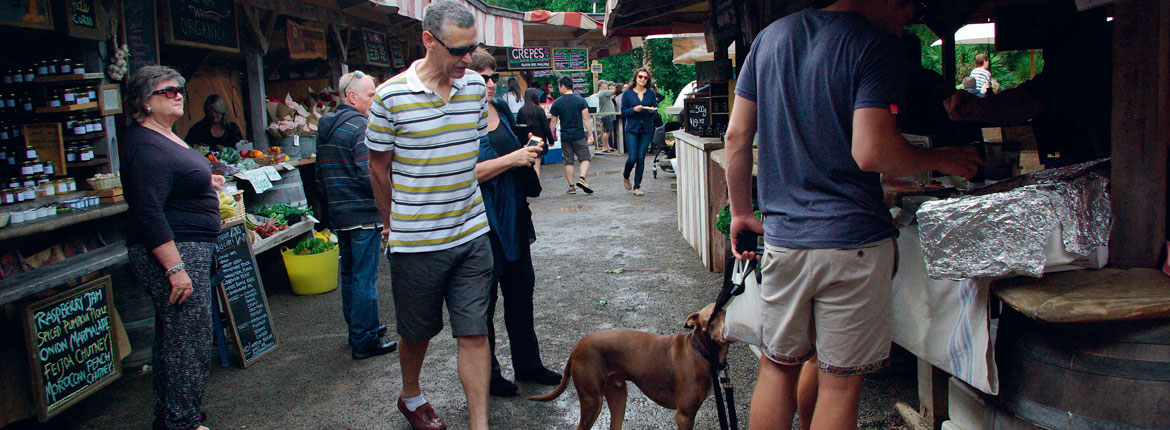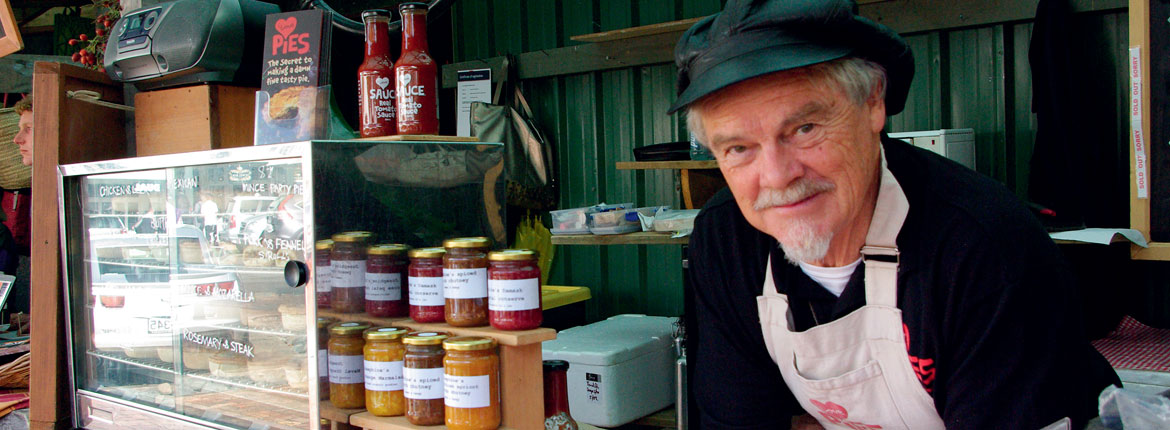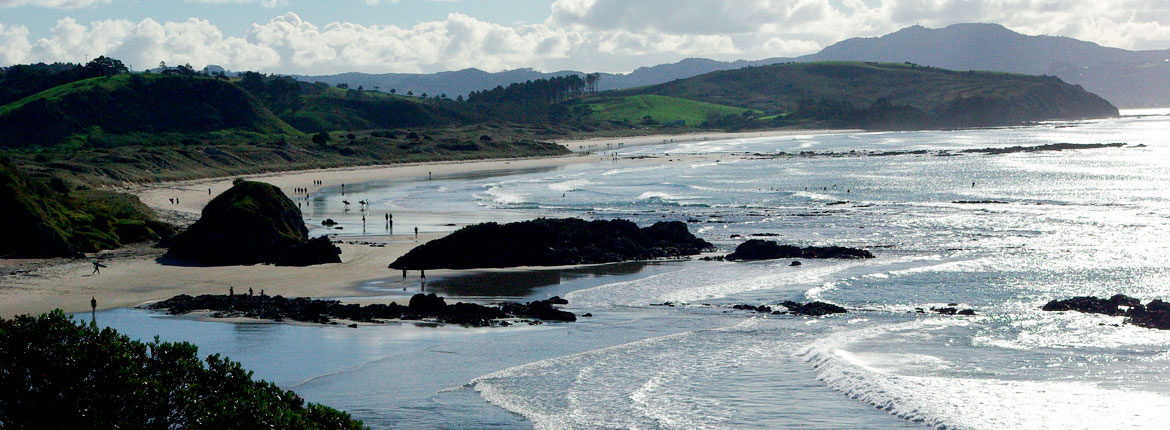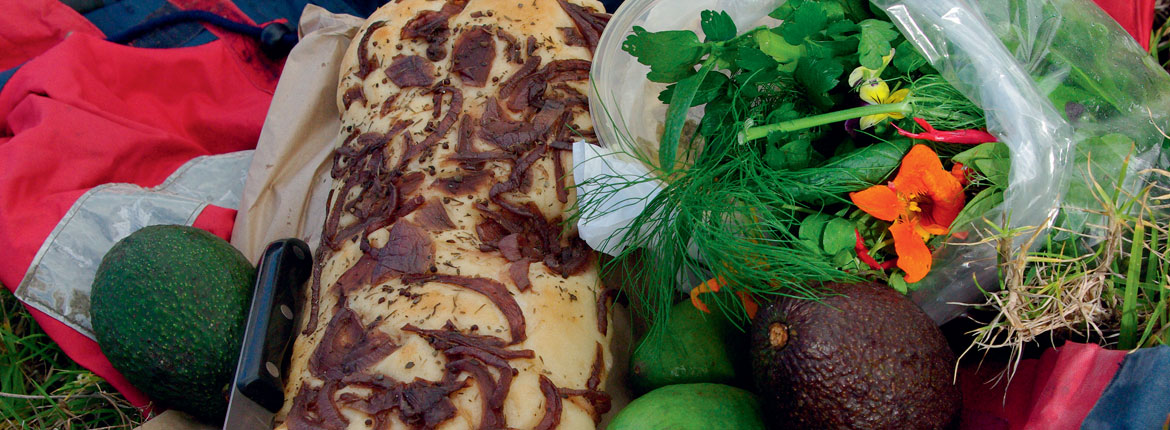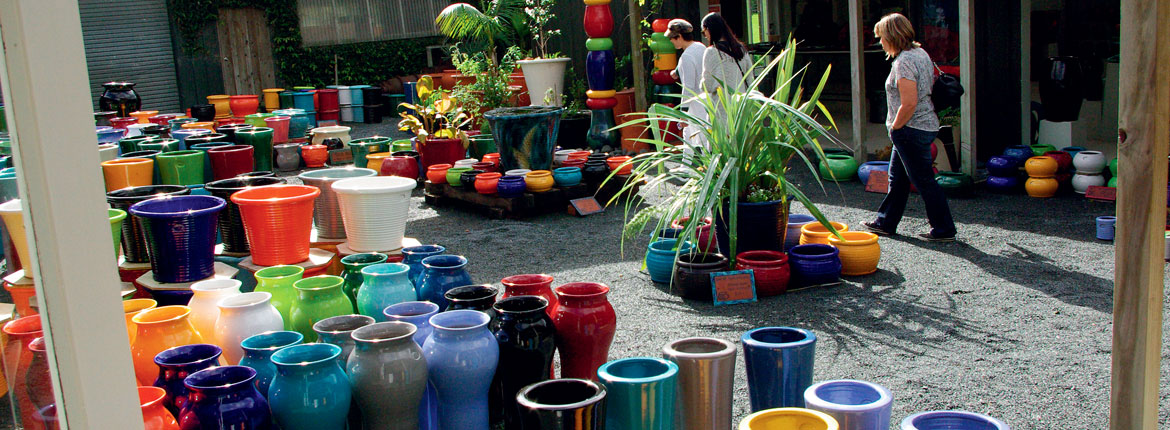Above Anchor Bay we set up our picnic: bread, hummus, salad greens, avocados, feijoas – all bought from Matakana Farmers’ Market.
Out there lie Great and Little Barrier Islands. Above us, clouds gather and darken and threaten.
Down at the beach, people walk or stand knee deep in froth or perch on rocks. Kids play in the shallows, parents photograph them.
It’s way past summer but people still enjoy the water, dressed in wetsuits. A few surfers are out, stretched along their boards, watching over their shoulders for secret signs in the endless rolling run.
Waves touch the shore one by one by one, tugging patterns around sand-rooted rocks.
We watch a man teach two young boys to surf. In turns they clamber up onto their boards and stand, knees bent, arms outstretched, and their father shoves at just the right moment to send them riding. They hoot and yell, triumphant.
This is day two of our easy escape from Auckland city, a short run up the motorway, through the tunnel, east at Warkworth.
It’s rolling country, with vineyards, well-tended gardens, farms with high hedges and glimpses of the sea.
In the midst of it all is Matakana village, once a support town for the surrounding rural lifestyles, but these days it’s more than that. It adds value to those holidaying at nearby beaches, with glamorous dining and boutique cinemas – who cares if it’s a wet weekend? And some of Matakana’s shops, specifically a craft gallery, a book store and a shoe shop, are destinations in themselves.
On Saturday morning, it’s all about the markets. We order coffees within two minutes of walking into the busy courtyard and stand watching the mingling masses, getting our bearings as we wait for them. Sweet smoke rises from a corner barbecue. A guitarist and singer serenade with Fleetwood Mac and Eagles covers.
At the core of the market are sellers of feijoa wine, locally made cheeses and olive oil, organic vegetables and breads. Around the edges, free range eggs are bagged up, dukkah is spooned into bags, passionfruit exchanged for gold coins, smoked salmon and parcels of sausage are handed over counters. Sizzling fritters are flipped and delivered, pizzas are built, juice is squeezed out of fresh fruit on the spot.
Families meander, sipping and nibbling. Locals chose bunches of flowers, handfuls of fresh herbs, bottles of chutney. They exchange news and pat each other’s dogs. A couple collects ingredients for a picnic at Tawharanui. 
We head out, systems full of bite-size samples, full-size Vietnamese rolls and flat whites but before leaving town, we wander up to another smaller market where second-hand stuff vies with craft for the passing dollar. We contemplate the options, move on.
Just out of Matakana we’re distracted again and turn right down Tongue Farm Rd to visit Morris & James pottery. Bright, jewel-coloured, glossy pots crowd the gallery and the garden surrounding the café. Visitors who time it right can tour the workshop, and even those who don’t can get an understanding of how the platters and plates, the fat round bowls, the slender garden columns and fancy-glazed wall plaques are made, thanks to descriptive panels and a video. It’s a fascinating place.
...leaving the seal at the far end with sunlight through bush dappling the road.
We’re in picnic mode though so we don’t linger long. Off the main road again, we head on to Tawharanui Peninsula and wind up its length, leaving the seal at the far end with sunlight through bush dappling the road. At the entrance of the regional park, the road dips down to the sea and follows the coast to a gate in a fence built to keep predators out. It knows we’re coming; it lets us in. Pukeko dance away from the track.
Surprised to find the car park full, we brace ourselves for a crowded beach but up on the headland above Anchor Bay we find the peace and calm we are hankering for. Flax and tussock fringe the knoll; the grass is picnic-perfect soft and spongy.
The plan was to walk one of several trails in the Tawharanui Open Sanctuary, including some that reveal the successful eco mission to encourage native birds back to the area, but busy clouds move their threat up a notch. We scoop up the scraps and head for the car.
With more time, we’d have driven to Leigh, Goat Island and Pakiri and we head that way, but we veer off at Omaha Valley Road, to check out The Vivian, a gallery just up the road on the right. It’s a beautifully crafted, modern space with thoughtfully curated contemporary shows. We catch the tail end of a figurative exhibition featuring many artists working in many different styles, collectively providing insight and happy diversion.
With art on our mind, it's an easy decision to make another stop on the way home – at Brick Bay Sculpture Trail, off the road to Snell’s Beach. The Glass House, a stunning, airy dining room on the edge of a small lake, is busy with wine tasters and afternoon-tea takers, but we bypass that and make straight for the track. Past shiny stainless steel gnomes, wind-blown hoops and spoons, intricately wrought over-size leaves and drums pierced with multi-coloured arrows, we meander a blissful hour or so in suspended belief. Designed to showcase and share large, ambitious outdoor art by around 50 artists at a time, the Brick Bay experience is extraordinary and generous.
Reluctant to submit to the city quite yet, we leave SH1 one more time, heading over Johnstone’s Hill instead of taking the tunnel. It’s a glorious piece of road with the Puhoi River meandering its snaky way toward Wenderholm and views expanding wider and wider as you go.
Our car, a shiny new joy to drive, sweeps up the hill. At Waiwera we hook around toward the pools, park up, pay up.
A steamy soak, the soundtrack of family chatter and squeals, is a grounding counterpoint to our two days of calm, cultural reflection and easy, rural escape.
Reported by Kathryn Webster for our AA Directions Autumn 2024 issue

